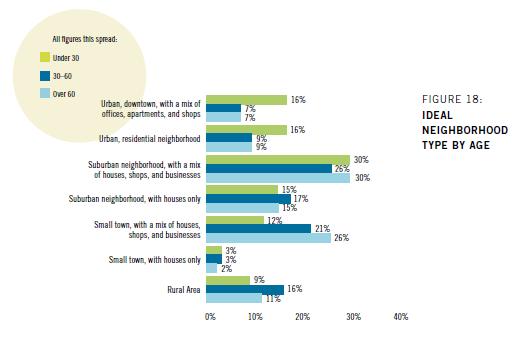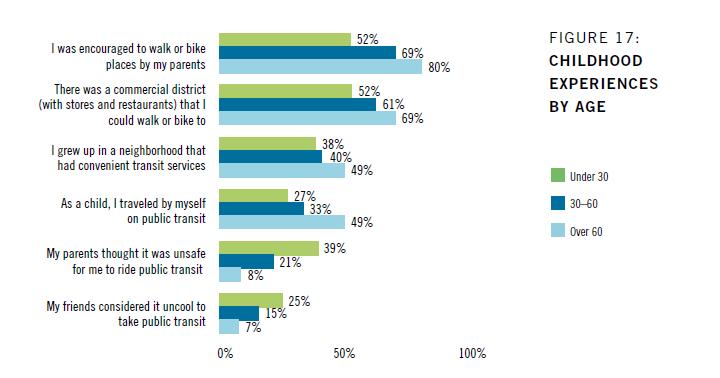It’s widely accepted at this point that Americans are driving less and the country overall is shifting towards transit to get around — but you may be surprised to learn that it’s not just due to young people favoring transit or a recovering economy. A recent study by TransitCenter, “Who’s On Board: 2014 Mobility Attitudes Survey,” goes beyond previous studies that only look at commuting trends and ridership figures by including travel attitudes and behaviors.
The big takeaway from this groundbreaking report is that transit-oriented development plays a big role. The type of neighborhood is the top predictor of whether or not people in that neighborhood prefer transit: suburban, residential neighborhoods are the most common types of neighborhoods that respondents live in, but many reportedly prefer to live in mixed-use, walkable neighborhoods. The report states that “the attractiveness of mixed-use neighborhoods is a major part of what drives people onto transit.”

As the research suggests, “land-use and housing policies designed to encourage mixed-use developments have the potential to draw large numbers of people out of cars and onto transit.” Promoting mixed-use, walkable and transit-accessible neighborhoods and investing in transit systems is no longer just a political posture; it captures the shifting interests and demands for a less car-dependent culture and proves to be the most effective way to accommodate and retain these shifts. A similar trend is occurring in the tri-state regionas well. The new generation of suburban migration to the metropolitan suburbs seeks density, walkability and transit access, and not communities that are only accessible by automobile.
Other notable findings from the survey include:

- Age is an essential factor. Across the states, Americans under 30 years of age are the most enthusiastic about transit even as they grow older, whereas Baby Boomers across all income levels are less likely to take transit. This contrast is backed by an interesting paradox: according to the survey, Millennials are defying their car-centric upbringing by embracing transit, while Baby Boomers are disregarding their transit-friendly upbringing by shunning it.
- Convenience, service levels and reliability. While technological advances are welcome, the most basic aspects of transit service takes precedent: travel time, reliability and cost are more important than features like WiFi accessibility and the availability of smartphone apps.
- Transit as a last resort. Low-income people are more likely to use transit, but this is not necessarily about affordability; it’s likely because there are no other options available.
This demand for mixed-use, transit-accessible and pedestrian-friendly neighborhoods delivers a clear message that policy makers, transit agencies and planners should accommodate by investing more dollars in transit and connecting the dots between land use and transportation. Suburban municipalities in the tri-state region have already begun to make headway, but more can be done as this largely unmet demand continues to grow.
